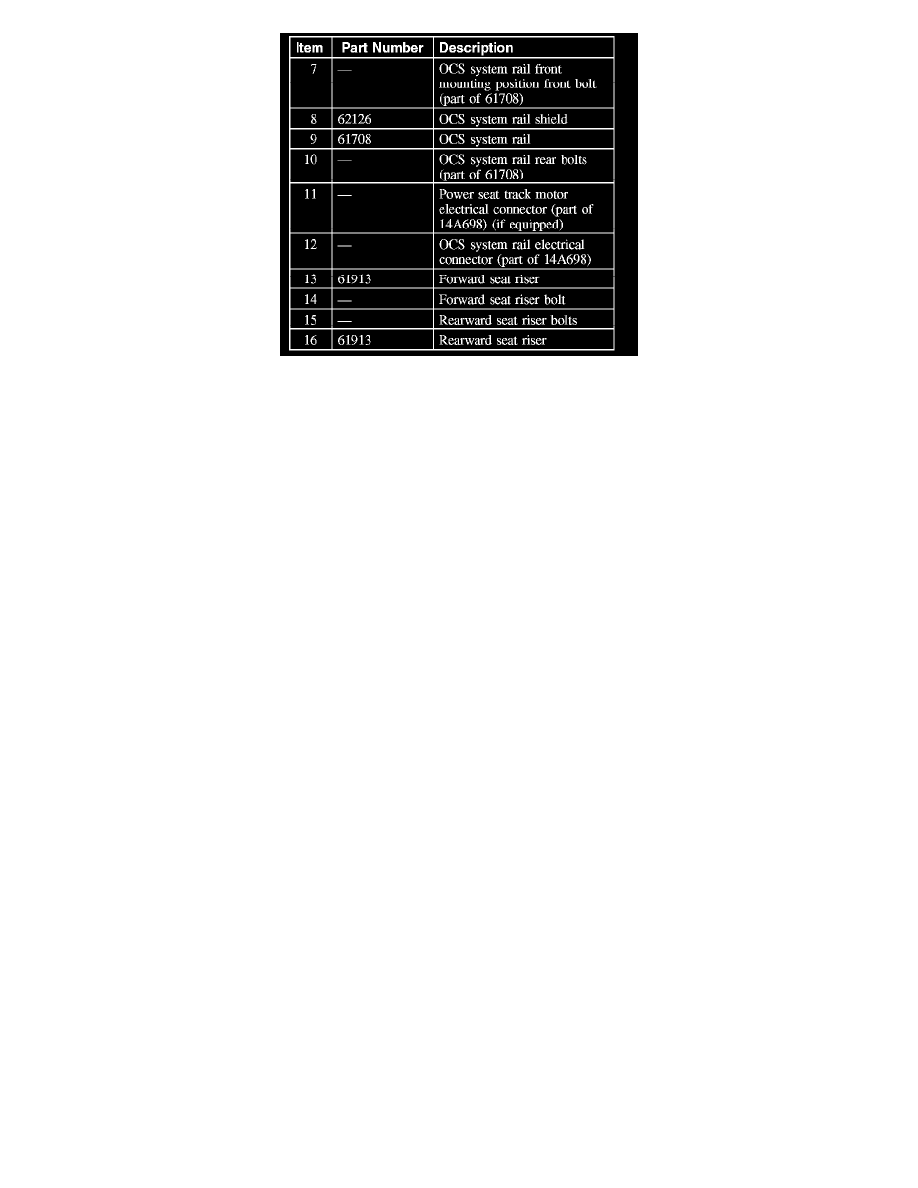Milan FWD L4-2.3L (2008)

Part 2
Removal
WARNING:
-
The occupant classification sensor (OCS) rails have a built-in strain gauge which may operate incorrectly if an OCS rail is dropped by
itself, dropped after it is installed to the front passenger seat or dropped after it is installed to a front passenger seat track assembly. Use
care when handling an OCS rail before or after it is installed to the front passenger seat or seat track assembly. Failure to follow these
instructions may result in incorrect operation of the OCS system and increases the risk of serious personal injury or death in a crash.
-
Do not disassemble the occupant classification sensor (OCS) rail or tighten or loosen any of the nuts and bolts installed to the OCS rail
body. Only the 8 bolts that attach the 2 OCS rails to the seat track may be removed and installed. Failure to follow these instructions may
result in incorrect operation of the OCS system and increase the risk of serious personal injury or death in a crash.
-
To prevent foreign material and contaminants from entering the occupant classification sensor (OCS) rail, make sure the OCS rail shield
is present, is not damaged and is correctly installed to the OCS rail. Failure to follow these instructions may result in incorrect operation
of the OCS system and increases the risk of serious personal injury or death in a crash.
-
Use care when handling the front passenger seat and track assembly. Dropping the assembly, placing excessive weight on or sitting on a
front passenger seat that is not secured in the vehicle may result in damaged seat components. Failure to follow these instructions may
result in incorrect operation of the occupant classification sensor (OCS) system and increases the risk of serious personal injury or death
in a crash.
NOTE:
-
The air bag warning indicator illuminates when the restraints control module (RCM) fuse is removed and the ignition switch is ON. This is normal
operation and does not indicate a supplemental restraint system (SRS) fault.
-
The SRS must be fully operational and free of faults before releasing the vehicle to the customer.
-
Repair is made by installing a new part only. If the new part does not correct the condition, install the original part and perform the diagnostic
procedure again.
All occupant classification sensor (OCS) system rails
1. Remove the passenger seat.
Outboard OCS system rail
2. If equipped, remove the manual lumbar control knob.
3. If equipped, remove the spring clip and the manual recliner handle.
4. Detach and position aside the cushion side shield.
-
Pull the side shield away from the seat cushion at the front edge and release the forward and side retainers.
-
Pull the side shield rearward to release the rear retainer and detach the cushion side shield.
Seat receiving a new OCS system rail
5. Remove the bolt and the forward seat riser from the affected side occupant classification sensor (OCS) system rail.
6. Remove the 2 bolts and the rearward seat riser from the affected side OCS system rail.
All OCS system rails
7. CAUTION: Push only on the tip of the occupant classification sensor (OCS) system electrical connector release tab to release the
electrical connector. Do not insert the tool too deep into the OCS system electrical connector or damage to the electrical connector may
occur.
